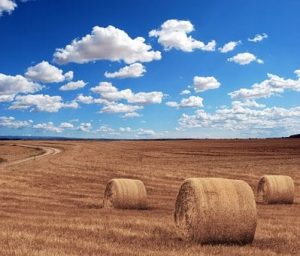Silage wrap can be described as a sealed airtight plastic tube containing a growing medium such as hay or grain. The tube is held open at both ends by a series of pressure-controlled valve assemblies called silage seals. As the plastic tube is filled with the growing medium, the tube shrinks back to its original size, and the expanding silage seals squeeze the expanding material together to form a tight seal.

Silage-Wrap is used to dehumidify indoor spaces, where a moist environment provides an ideal medium for microbial growth. Hay or grain can be used to make silage rolls to deliver air to a building for dehumidification. Straw bales can be used to provide a layer of protection for hay in feed bins and storage bins. Many people will also use silage wrap to help prevent weeds in garden beds, increasing the nutritional value and aroma of the soil through the prevention of weed seeds germinating and killing grasses and fungi.
Growing weeds in an open field are extremely difficult. Many silage wraps are made using a moisture barrier. This prevents moisture from penetrating the growing medium, which could cause problems to the plants. Hay bales are often used in conjunction with a silage wrapper to prevent weeds from growing in an unwanted way. If the weeds get close to the hay, the silage will quickly absorb the excess moisture and hold it against the soil for complete absorption. This means that the weeds do not grow unwantedly, and hay can be an effective weed controller.
Hay and grain can be combined with several other agricultural plastic waste products to create a nutrient-rich bale. It is important to choose a bale that is high in moisture but low in solid particles. As the bales are aerated, they will release the moisture they contain, so they need to contain at least 40% moisture. When the moisture is released, it is carried away by wind and does not return to the growing beds. The result is a tale that has very little structure but contains nutrients for plant nutrition.
Agricultural plastic waste products like hay, straw and grain can be combined with several other elements to form silage wrap products. The first is the seven-layer silage wrap, most commonly used on small scale commercial farms and ranches. In this type of bale, the layer is completely composed of silage. Seven-layer Silage-Wrap provides a higher amount of oxygen to the soil, allowing it to hold more moisture. This means that the bales will stay moist and healthy for much longer, ensuring that the bales can be used for extended periods.
Another type of silage wrap product is the clear wrap product. In this bale type, the silage is separated into several sections, but no air pockets are left behind. This allows silage to be aerated along with the growth phase of the crop. The process of aeration helps to loosen any build up in the grains or seeds. Once the air has been extracted, the clear wrap can be used as a feedstock for an animal feed industry.
High-quality silage wrap can also be made with wicker or rattan. Both materials create a durable, lightweight bale density product. Wicker and rattan are typically woven from sinew, fibres of palm, bamboo or other natural fibres. Although the manufacturing process for both materials can create some of the most beautiful bales, the differences in bale density and shape are often insignificant. With this type of bale, the pattern and texture of the wrap tend to follow the natural contours of the wood or plant, rather than leading to excessive brittleness.